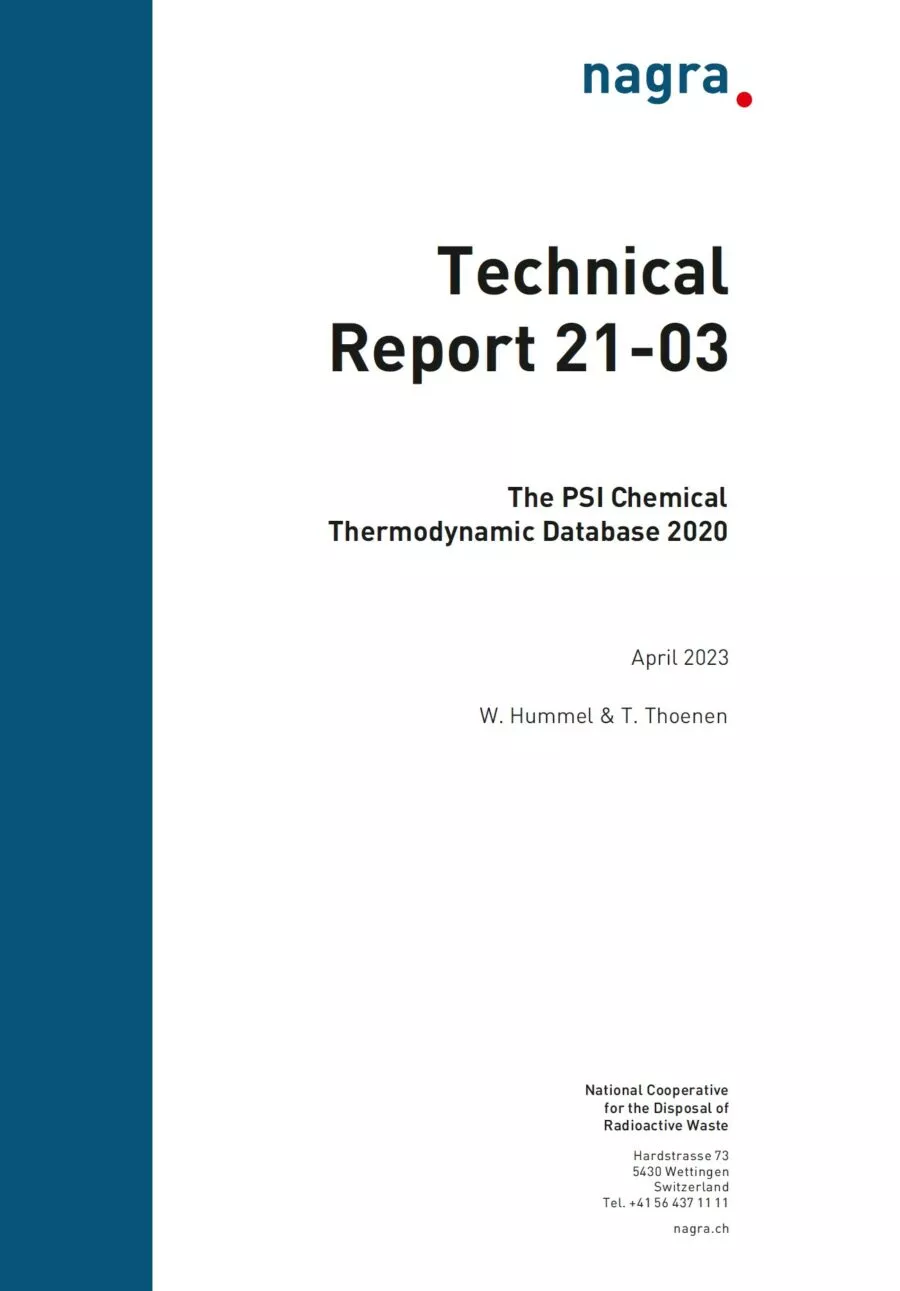
Technical Report NTB 21-03
The PSI Chemical Thermodynamic Database 2020
Abstract
The PSI Chemical Thermodynamic Database 2020 (TDB 2020) was prepared for the next safety assessments related to the general licence application (Rahmenbewilligungsgesuch – RBG) in the framework of the Sectoral Plan for Deep Geological Repositories (Sachplan Geologische Tiefenlager – SGT) for the planned repositories for low- and intermediate-level (L/ILW) and high-level (HLW) radioactive waste in Switzerland.
The TDB 2020 is an update from the Paul Scherrer Institute (PSI)/Nagra TDB 12/07, published in 2014, and its predecessor Nagra/PSI TDB 01/01, published in 2002. The update was carried out over the period 2017 – 2020 and was completed in 2021 with the implementation of an electronic database for the GEMS geochemical speciation code.
For the preparation of the solubility and sorption databases for the RBG, the TDB had to be updated and existing gaps filled. The TDB 2020 contains data for all radionuclides to be considered in the safety assessment for the RBG, as well as a complete data set for corresponding pore water models and data for some important chemotoxic elements.
The TDB 2020 includes new reviews for the elements Ac, Ag, Cd, Cf, Cu, Hg, Ho, Pa, Pb, Po, Sm, Ti and Zng, and updates of previous data for Al, alkali (Li, Na, K) and alkaline earth elements (Mg, Ca, Sr, Ba, Ra), Am, Eu, Fe, Mn, Mo, Nb, Np, organic ligands, Pd, Pu, S, Se, silicates, Sn, Tc and U. Data for Ni, Th and Zr, included in PSI/Nagra TDB 12/07 based on NEA TDB reviews remain essentially unchanged.
The data evaluation procedures and the selection of values are documented in all steps to maximise traceability of the review process.
As in the review volumes of the Nuclear Energy Agency (NEA) and in PSI/Nagra TDB 12/07 and Nagra/PSI TDB 01/01, the specific ion interaction theory (SIT) was used to extrapolate experimental data to zero ionic strength. In this update, particular care has been taken to describe how the corresponding SIT coefficients were obtained, and the selected values are all tabulated.
For the application of SIT to environmental systems where salinity is governed by NaCl, an estimation method has been developed to fill the numerous gaps in the set of experimentally determined SIT coefficients in NaCl background media.
The TDB 2020 includes thermodynamic data for 53 elements, 1'034 aqueous species (and SIT ion interaction coefficients for all species), 358 solids and 8 gases.
